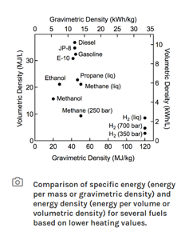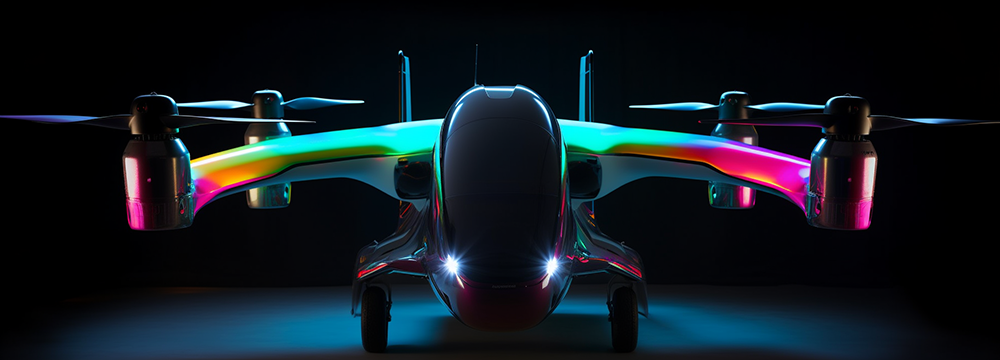While there are various options when it comes to powering your drone, few are as intriguing as hydrogen. Many drone operators would like to fly longer than batteries allow, making the hydrogen fuel cells that typically offer the longest flight times, while emitting only heat and water as by-products, especially appealing. Various hydrogen-fueled drones will be released over the next year, highlighting the various ways hydrogen will be reconsidered by drone operators in the near-future.
One organization is especially focused highlighting and enabling those opportunities is HYSKY Society, which is an organization that is dedicated to championing healthier skies by advancing hydrogen aviation across North America. The team at HYSKY believes that hydrogen can be a major driver of innovation across the drone market.
To get a better sense of how these opportunities could take shape, we connected with Danielle McLean, CEO & Founder of HYSKY Society. We caught up with her to explore the biggest obstacles when it comes to the adoption of hydrogen, the role that drones will play in the clean hydrogen revolution, and much more.
Jeremiah Karpowicz: Can you give us a very basic breakdown of the opportunities that hydrogen represents as a source of clean energy, given that it only produces only water when it is consumed as a fuel?
Danielle McLean: There are two ways you can use hydrogen onboard an aircraft: in a combustion engine or in a fuel cell. Burning hydrogen in a combustion engine can emit NOx, which can be mitigated, but no CO2. Using hydrogen in a fuel cell has zero emissions other than steam.
What are the biggest obstacles associated with the wider adoption of hydrogen power and better enabling sustainable air mobility? Are they more about costs? Or logistics? or something else?
There are three main barriers for hydrogen aviation. I call them the big three: infrastructure, cost, and regulatory. Education is at the heart of all three of these which is why HYSKY puts such a huge emphasis on educating the public on hydrogen in aviation.
How does hydrogen compare to other sources of power? Does it provide more "bang for the buck" in a measurable sense?

When comparing to other fuels, this is my favorite chart:
- The chart is showing that on the Y axis, the higher you are the more fuel you can fit in a specified volume. The X axis is showing how much energy is contained in a specific mass. Ideally, a fuel would be on the top right quadrant. Hydrogen contains almost 3x more energy per kg than jet fuel, but it requires more volume to store it. This is why hydrogen storage is one of the top research topics. If we can figure out a way to store more hydrogen per volume, it will be far superior to any other fuel we’ve ever worked with, with no carbon emissions. However, we can fly with hydrogen today, with zero emissions, the flights just might not look exactly like traditional flights.
- Currently hydrogen is more expensive than jet fuel, however, many programs such as H2Hubs, which has $8 billion in funding, are underway to bring down the cost of hydrogen. The DoE’s hydrogen shot target is $1 per 1 kg in 1 decade or “1 1 1.”
- Hydrogen can go several times further than batteries
Is hydrogen as safe as other fuels? Or safer?
Hydrogen is just as safe as any other fuel we handle. Some properties even make it safer. For example, hydrogen is much lighter than air so if it leaks it dissipates very quickly instead of pooling like traditional fuels.
Another property that makes hydrogen safer is that its autoignition temperature is much higher than traditional fuels. I should point out that hydrogen did not cause the Hindenburg to explode, in fact, what we saw burning in the videos and images was not hydrogen because hydrogen burns transparently.
I strongly recommend reading “Hindenburg: The Wrong Paint. Hydrogen: The Right Fuel.” by Richard G. Van Treuren and signing up for NASA liquid hydrogen expert, Matt Moran’s, Liquid Hydrogen (LH2) Webinar Series.
How has technology evolved over the past few years on a practical level? Is it easier to deploy or integrate today in a way it wasn't ten or five years ago?
The technology has been here. In fact, NASA has used hydrogen to send people and cargo to space for decades. I think what’s driving the shift to hydrogen is non-technical. Some of the drivers are:
- Massive investment by the federal government through the IRA and BBB acts show that the United States is serious about hydrogen.
- Pressure to decarbonize aviation is growing. Aviation is the last transportation sector to make the transition. Aviation emissions are on track to triple by 2050 while every other sector's emissions are decreasing.
- The boom in drones and the eVTOL sectors have many operators wanting to fly further than what batteries allow but don’t want to trash the planet. Hydrogen is the ideal solution.
A recent industry article mentioned that drones have the potential to play an outsized role in the clean hydrogen revolution when it comes to both adoption and scalability. Do you agree? If so, what does that adoption and scalability look like?
I do agree. Drones don’t require nearly as much hydrogen as a commercial aircraft like a 737 so the infrastructure can be built and tested on a small scale. A drone operator could bring in a mobile H2 production trailer like the one that GenH2 offers and operate anywhere. Using H2 instead of batteries or a combination of both could provide 4x longer flights. This opens up opportunities for medical use applications and can provide meaningful resources to indigenous and rural communities while proving the safety and reliability of hydrogen in aviation.
One of your articles mentioned that hydrogen has quickly proven to be a game changer for aviation, but is that an impact we can see in the present or will it be further realized in the future?
Companies like Zero Avia and Universal Hydrogen already proved hydrogen can safely fly and it is absolutely scalable for aviation. It will be fully realized once we have addressed “the big 3” challenges: cost, regulatory, and infrastructure. This is precisely what HYSKY Society was formed to do.
What are some of the biggest misperceptions you've encountered when it comes to hydrogen power? How have you worked to address them?
Two big ones:
- That hydrogen caused the Hindenburg to explode, as discussed in a previous question. HYSKY is working with Moran Innovations to develop a Hydrogen Education Curriculum for all ages which addresses these common misconceptions. Our goals with this project are to inspire and prepare the future hydrogen aviation workforce and provide continuing education to those already working in industry who were previously never offered a hydrogen aviation curriculum. Our first presentation of this will be October 9th, 2023 at FLYING HY, in Grand Forks, North Dakota. The premiere of the hydrogen aviation workshop kicks off the largest hydrogen aviation event of the year. Tickets to FLYING HY include the workshop plus dual conference admission to FLYING HY and The UAV Summit & Expo all in one location. More info on this at HYSKY.org
- The biggest misconception I hear from industry is that aviation isn’t ready for hydrogen, that this will happen in 2040 or beyond. But, for HYSKY Society, that is unacceptable. Hydrogen aviation is happening right now, the technology exists right now, it’s the lack of financial investment, the need for more education, and the absence of specific legislation that are the obstacles. All of which are currently being addressed by HYSKY Society. The best way to expedite the decarbonization of aviation is to join forces with a non-profit dedicated to advancing hydrogen aviation. We can’t do this alone. Join HYSKY.org We need every voice and every ear and every eye focused on this movement, NOW.
Where do you envision hydrogen will be in terms of a percentage of the power sources utilized by drones in five years?
Right now, we are at the beginning of the Hydrogen Age. In five years, 100% of the drone operators who need to fly further or longer than they can with batteries may be using hydrogen to do so.
What would you say to someone that saw the potential advantages hydrogen could enable for their product, but aren't sure where to begin in terms of taking their first or next step?
Join HYSKY Society. This is exactly what our community is here to help with. The member community is currently free and we are often consulted as H2 matchmakers. If you want H2 or have H2 this is the place for you!
We understand that advancing hydrogen aviation requires a robust hydrogen economy and we are committed to encouraging its development in every possible way. Our network is expanding daily and our Member’s Area on our website for anyone who has a need to reach out.
And FLYING HY is a must-attend event this October. All are welcome and encouraged to attend. The Hydrogen Revolution affects everyone.















Comments